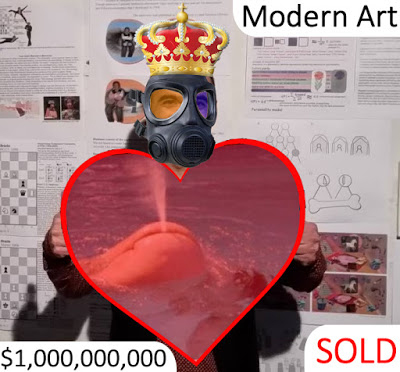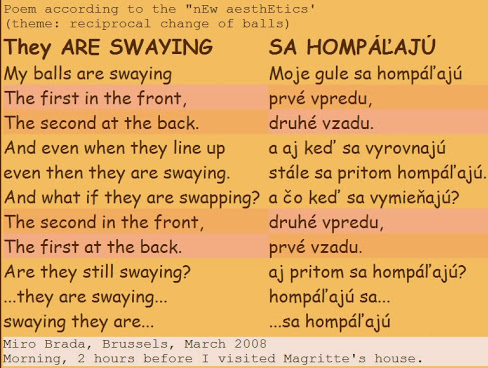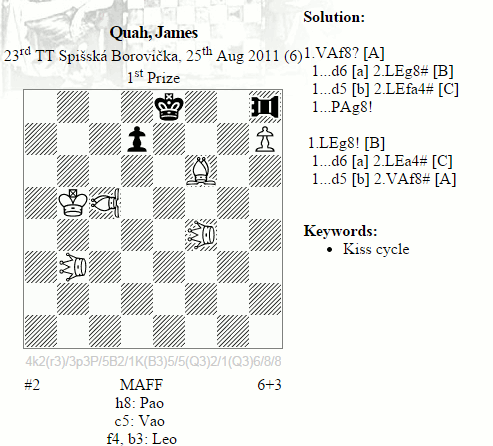I developed the concept of maximization originality - a synthesis of economics and psychology - as a student of PhD in economics in 2000, redefining the classic utility concept. I published a few articles about that and other related concepts: Edison's economics, Redirection of talent, Convergence and Divergence of economics, Pay as you go system.
The richer you are the less equally rich or richer people.
The richest person is only one (= unique).
Maximization of richness or leisure (=the classic utility concept), maximizes the originality (uniqueness).
Doing an extreme sport, striptease, having tattoo, can have the same function as maximizing richness / leisure.
So maximization of originality can relate any activity / motivation.
Seemingly to be the richest is unique as to be the poorest... But the rich can easily become poor, while the poor can hardly become the rich. So there is an asymmetry in what is maximized, reflecting intelligence and opportunity... Without opportunity even the brilliant person maximize irrationally (=destructive behavior). So irrational behavior doesn't necessarily indicate insufficient intellect.
John Stuart Mill in Principles of Political Economy (1848) wrote that a commodity must be useful and scarce: the scarcer (= more original), the more precious. The evaluation of scarcity depends on opportunity and intelligence, determining time spent on affordable value:
The utility can be defined as: Umax =a*b*c*…
Utility multiplies the values because they are independent (in terms of occurrence), and their overall occurrence (=probability) is then equal to multiplication of all their probabilities. So maximizing utility minimizes overall probabilities of all values. It is opposite to entropy.
If there is only 1 possible value, it consumes all time, regardless of intelligence…
For 2 values, we have this equation:
By mathematical substitution: Umax =a*(T-a) = a*T – a2
And derivation gives: T= 2*a, so: a = T/2...
In case of two affordable values, rational agents halve their time between value ‘a’ and ‘b’.
To illustrate, it is better to have 2 children equally healthy, than 1 child very healthy and another very sick. It results from fact that a2 is bigger than (a-x)*(a+x) =a2-x2:
The richest person is only one (= unique).
Maximization of richness or leisure (=the classic utility concept), maximizes the originality (uniqueness).
Doing an extreme sport, striptease, having tattoo, can have the same function as maximizing richness / leisure.
So maximization of originality can relate any activity / motivation.
Seemingly to be the richest is unique as to be the poorest... But the rich can easily become poor, while the poor can hardly become the rich. So there is an asymmetry in what is maximized, reflecting intelligence and opportunity... Without opportunity even the brilliant person maximize irrationally (=destructive behavior). So irrational behavior doesn't necessarily indicate insufficient intellect.
John Stuart Mill in Principles of Political Economy (1848) wrote that a commodity must be useful and scarce: the scarcer (= more original), the more precious. The evaluation of scarcity depends on opportunity and intelligence, determining time spent on affordable value:
a + b + c … = Time, where a, b, c, …are affordable values / activities
The utility can be defined as: Umax =a*b*c*…
Utility multiplies the values because they are independent (in terms of occurrence), and their overall occurrence (=probability) is then equal to multiplication of all their probabilities. So maximizing utility minimizes overall probabilities of all values. It is opposite to entropy.
If there is only 1 possible value, it consumes all time, regardless of intelligence…
For 2 values, we have this equation:
a + b = T
Umax =a*b
By mathematical substitution: Umax =a*(T-a) = a*T – a2
And derivation gives: T= 2*a, so: a = T/2...
In case of two affordable values, rational agents halve their time between value ‘a’ and ‘b’.
To illustrate, it is better to have 2 children equally healthy, than 1 child very healthy and another very sick. It results from fact that a2 is bigger than (a-x)*(a+x) =a2-x2:
Maximization of originality: the law of values’ equity. Irrational e.g. drunk person may break law of values’ equity... To maximize originality the drunk person can make a striptease in front of public (= a+x) to pay a price at police station (= a-x).
Existentialism is seemingly other view without utility concepts, because after death, there is infinity times of nothing nullifying all motivations, values... But in fact people can't imagine / feel 'infinity times of nothing', it would take the whole life (and still not enough) to realize it. So current activities, motivations can't be nullified by 'infinity' as there is no infinity in real time. The existentialism is just one of tries to be universal collection of all collections, maximizing uniqueness. Also I maximize uniqueness by defining 'maximization of uniqueness' to explain seemingly incomparable motivations.
Motivation of a collector
Law of values’ equity corresponds to 'smoothing consumption': a tendency to distribute consumption equally across all periods. Also it fits Marshal’s diminishing return of the same value (marginal utility, Principles of Economics, 1890): people prefer 5 lemons and 5 oranges (at same price) to 10 lemons or 10 oranges. But, for collector of oranges (or art), the orange hasn't a diminishing marginal value. At that case agent may 'overpay' such piece (contrary to marginal utility). All people collect something - pictures, paintings, stamps, experience, etc., and so the law of values' equity becomes law of collections' equity. Then analysis of motivation is more complex (realistic) to understand which value (and for whom) belongs to which collection. For same person, one thing may be in more collections (and collections can be in other collections), while it still may have value in itself...
Motivation of a figure skater
Some people don't only collect, but also create things. A figure skater can't win by thwarting rivals' pirouettes, but by creating better one. Motivation is to create a collection to include other collections. A competition is so promoted to innovations' level. Philosophies try to define a collection of all collections. There is limitation when a collection of all collections can't include itself, as it would result in infinite recursion (=psychosis). It corresponds to Russell's paradox, or reveal motivation of Wittgenstein to define a 'pure' langue (collection of all collections).
Maximization of Uniqueness
All motivations seek uniqueness (the lowest occurrence) within internal (intelligence) and external (opportunities) limits. In nature, to be healthy, satiated, attractive, smell good, etc is less likely than to be sick, hungry, ugly, smell bad. So maximization of uniqueness is opposite to entropy or randomness. The main principle is that overall probability of maximizing person multiplies across all independent activities (values): probability of to be healthy, pretty, rich, etc... Lack of opportunity may result in excess of one activity - e.g. intelligent person that can't productively materialize his potential, may become paranoid (the other observe you is unlikely, unique) or even psychotic. Deficient intelligence may also generate a special motivation: collecting empty sacks...Existentialism is seemingly other view without utility concepts, because after death, there is infinity times of nothing nullifying all motivations, values... But in fact people can't imagine / feel 'infinity times of nothing', it would take the whole life (and still not enough) to realize it. So current activities, motivations can't be nullified by 'infinity' as there is no infinity in real time. The existentialism is just one of tries to be universal collection of all collections, maximizing uniqueness. Also I maximize uniqueness by defining 'maximization of uniqueness' to explain seemingly incomparable motivations.
At the end of 2000 as a Phd student of economics, I sent my paper to Journal of Socio-Economics, entitled 'Edison's economics and model of motivation', explaining also maximization of originality. It was rejected in the 2nd round because 'socio-economic element was missing', which was evidently untrue... My articles from 2001-2004, were quoted e.g. in 2 MA theses, 1 seminar paper:
Application of game theory, psychology, decision under uncertainty, 2010, B. Benova, Comenius University, Faculty of Mathematics, Physics, and Information science
Utilizing the Prospect Theory for decision of economic subjects, 2007, M.Rusnak, Economic University in Bratislava
Game theory and decision making, Faculty of management, Economic University in Bratislava
Also I published interviews with economists e.g:
Clive Granger (Nobel prize winner in 2003): China and India can dominate, Tyden, 2004
The interviews from Czech weekly Respekt, with transition economist Gerard Roland, and William Baumol

Redirection of Talent
According to economics the talented pursue rent-seeking activities if can't pursue productive ones like technological innovations. Society flourishes if talent is in innovations. Rent-seeking, philosophical reasoning are mentioned as 'alternative activities'. I divided them to:
1) sophisticated: philosophy, chess composition, logical puzzles, chess
2) rent-seeking: litigation, financial dealings, etc.
3) pathological: neurosis, psychopathy, psychosis.
It could e.g. explain why Russia or socialistic countries with less opportunities were better on average in e.g. chess than Western countries. In 2003, I made an interview with an economist William Baumol about 'alternative activities' for the Czech weekly Respekt: The discrimination of blacks has increased the number of jazz composers. In the interview Mr. Baumol admitted that the allocation of talent is a also psychological, when lack of opportunities may result in mental disorders. To utilize the potential captured in sophisticated alternatives could be redirected to more useful areas like programming. Chess composition could be also a new field - part of logic / mathematics at Universities: to develop logical thinking, functional programming. In 2002 I made an interview with Bedrich Formanek (President of FIDE for Chess Composition 1994-2002) for a newspaper Slovo entitled: Myšlienkové krasokorčuľovanie (Figure skating in thoughts). My aim was to confirm part of my psychological-economic research, classifying chess composition as a sophisticated alternative for people that can’t utilize their potential in profitable activities...

Assuming the socialism limited people to invest their potential to profit, their pursue chess or chess composition as a sophisticated alternative activity satisfying their intellect... I found a link between living standard (GDP per capita), and success in chess composition (measured by prototypes in new strategic themes). There was a difference in the quality of prejudices (assessed by Questionnaire of Unbiased Judgement), when Western composers were more tolerant (similar pattern as people cured in psychotherapy), while Eastern Europeans were slightly less tolerant. It seems Westerners composed chess problems as psychotherapy, while Eastern Europeans sought status.
Chess composition as an 'alternative activity' is a vulgar interpretation of market economy. In fact, it is more complex problem, as knowledge, education is part of public economics with externalities, spillover effects. Internationally the chess composition was / is especially in Europe, Russia, then USA and Latin America (due to European emigrants), India, Indonesia, some Arabic countries, and since 90s also in Japan. It has no tradition in e.g. China, Korea.
1) sophisticated: philosophy, chess composition, logical puzzles, chess
2) rent-seeking: litigation, financial dealings, etc.
3) pathological: neurosis, psychopathy, psychosis.
It could e.g. explain why Russia or socialistic countries with less opportunities were better on average in e.g. chess than Western countries. In 2003, I made an interview with an economist William Baumol about 'alternative activities' for the Czech weekly Respekt: The discrimination of blacks has increased the number of jazz composers. In the interview Mr. Baumol admitted that the allocation of talent is a also psychological, when lack of opportunities may result in mental disorders. To utilize the potential captured in sophisticated alternatives could be redirected to more useful areas like programming. Chess composition could be also a new field - part of logic / mathematics at Universities: to develop logical thinking, functional programming. In 2002 I made an interview with Bedrich Formanek (President of FIDE for Chess Composition 1994-2002) for a newspaper Slovo entitled: Myšlienkové krasokorčuľovanie (Figure skating in thoughts). My aim was to confirm part of my psychological-economic research, classifying chess composition as a sophisticated alternative for people that can’t utilize their potential in profitable activities...

Assuming the socialism limited people to invest their potential to profit, their pursue chess or chess composition as a sophisticated alternative activity satisfying their intellect... I found a link between living standard (GDP per capita), and success in chess composition (measured by prototypes in new strategic themes). There was a difference in the quality of prejudices (assessed by Questionnaire of Unbiased Judgement), when Western composers were more tolerant (similar pattern as people cured in psychotherapy), while Eastern Europeans were slightly less tolerant. It seems Westerners composed chess problems as psychotherapy, while Eastern Europeans sought status.
Chess composition as an 'alternative activity' is a vulgar interpretation of market economy. In fact, it is more complex problem, as knowledge, education is part of public economics with externalities, spillover effects. Internationally the chess composition was / is especially in Europe, Russia, then USA and Latin America (due to European emigrants), India, Indonesia, some Arabic countries, and since 90s also in Japan. It has no tradition in e.g. China, Korea.
Edison's Economics
Kultúra, 1999
1) Edison carries hammers from the ancient factory. He thinks to easier his work. It slows him, so he is less paid and risks to be fired. What utility Edison maximizes?
2) Edison's boss sees Edison is slow. It reduces his profit, so he should fire him, but he waits - thinking why Edison is slow. What utility Edison's boss maximizes?
3) Edison invents a vehicle radically raising the output.
In classic utility, Edison's thinking is investment, and the vehicle is expected value. Edison's boss represents society crucial to promote invention: temporary patent should stimulate it. Unpredictability of invention reduces its expected value: thinking is irrational (rarely results in patent). So Edison and his boss think regardless of outcome, having 'thinking in utility'.
Economic formulas of behavior rather justifies power structure, than reflects reality. Newton's calculus is verifiable in reality, while variability of results in economics apologizes anything in politics. Economics has become a 'modern' religion, when obeying 'economic laws' raises expected utility (=karma, heaven...), while disobedience decreases it (=hell...).

2) Edison's boss sees Edison is slow. It reduces his profit, so he should fire him, but he waits - thinking why Edison is slow. What utility Edison's boss maximizes?
3) Edison invents a vehicle radically raising the output.
In classic utility, Edison's thinking is investment, and the vehicle is expected value. Edison's boss represents society crucial to promote invention: temporary patent should stimulate it. Unpredictability of invention reduces its expected value: thinking is irrational (rarely results in patent). So Edison and his boss think regardless of outcome, having 'thinking in utility'.
Economic formulas of behavior rather justifies power structure, than reflects reality. Newton's calculus is verifiable in reality, while variability of results in economics apologizes anything in politics. Economics has become a 'modern' religion, when obeying 'economic laws' raises expected utility (=karma, heaven...), while disobedience decreases it (=hell...).

Convergence and Divergence of Economics
The main idea of the article published 15. Sept 2004 (exactly 4 years before the fall of Lehman Brothers) was the mechanism of the market divergence, when people buy assets for future profits. Apart from financial market theory, when it is impossible to make a long-run profit (on average) without inside information, I identified another source of divergence: how many people may know about that I know what to buy / sell, with exponentially raising possibilities who and what may know. The more time spent by the analysis, the higher divergence, so economy based on uncontrolled markets cannot be even rationally analyzed, which inevitably results in uncontrolled bubbles of self-fulfilling prophecies reinforcing irrational expectations. Psychologically, the speculations that justify why people buy / sell asset (or commodity like house as an asset), drives people away from reality: people don't asses the real value of the asset (e.g. how it is useful or complicated to manufacture), but expectation of its future price (often manipulated by adverts: pseudo inside information). And the whole 'science' like marketing, financial markets..., serves to justify 'rationality' of the markets: 'experts' talking about raising or falling of assets's prices, 'economic growth'...
Another article 'Under the Sun is the darkest' deals with pay as you go pension system, transferring money from the young to old generation. It can be analyzed by overlapping generations model pioneered by Nobel laureate Maurice Allais. In comparison with 'pension accumulation system', the 'pay as you go' system has neither moral hazard nor dynamic inefficiency - overinvestment in some sectors. In addition 'pension private funds' investing money to assets, cannot provide long-run higher profits than interest rates in the banks - which means people could save money in the bank, instead 'private funds'. Aging population is used as an argument against 'pay as you go' system, but labor productivity raises too and the decline of labor population would decrease profits in the private funds too.
Another article 'Under the Sun is the darkest' deals with pay as you go pension system, transferring money from the young to old generation. It can be analyzed by overlapping generations model pioneered by Nobel laureate Maurice Allais. In comparison with 'pension accumulation system', the 'pay as you go' system has neither moral hazard nor dynamic inefficiency - overinvestment in some sectors. In addition 'pension private funds' investing money to assets, cannot provide long-run higher profits than interest rates in the banks - which means people could save money in the bank, instead 'private funds'. Aging population is used as an argument against 'pay as you go' system, but labor productivity raises too and the decline of labor population would decrease profits in the private funds too.








































